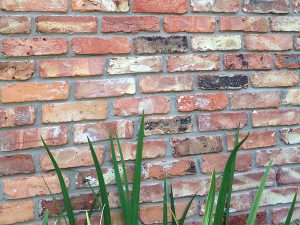Brick Can Hold Its Own Against Natural Disasters
 For thousands of years, brick has withheld natural disasters such as hurricanes, tornadoes, high winds, hail, and punishing rain. These indestructible building blocks along with modern building codes have made them even stronger.
For thousands of years, brick has withheld natural disasters such as hurricanes, tornadoes, high winds, hail, and punishing rain. These indestructible building blocks along with modern building codes have made them even stronger.
“Generally, homeowners are concerned about the strength and endurance of the exterior of their home. Although most do not understand the significant differences between the types of exterior cladding, they all want a material that is durable to the weather extremes,” says Jay Cox of Acme Brick.
“Properly constructed brick exterior walls offer superior performance to wind driven objects, temperature extremes, and fire,” Cox said. “Brick construction with full mortar joints and wall ties provides a strong barrier to external forces, unlike other materials which fall short in exterior performance.”
“In general, single-story homes–many of those sheathed in brick–fared much better than their two-story wood counterparts. Tornadoes can exert enormous pressure on a building. At 300 mph, wind pressure equals 404 pounds per square foot. The smaller wall area of a single story–and the impact-resistant brick sheathing–protected these buildings.”
“Hail damage is also a real concern for all types of siding construction other than brick or masonry,” Cox added. “The advantage of a brick exterior is the strength of the product in the wall. Most building brick have a minimum compressive strength of 3000 psi, which makes them very difficult to chip, crack or break due to environmental forces.”
“Homeowners in every part of the country – whether they are storm-prone or not – get a better return on investment with brick construction,” Cox said. “The initial investment is slightly higher for brick than for wooden or synthetic construction materials, but it has been shown that homes constructed of brick increase in value at a much higher rate.
“The reasons for this are simple. Brick homes are almost maintenance-free. They don’t require painting every few years and, because of this natural material’s insulation value, homeowners enjoy lower monthly utility bills.
“Plus, the property insurance rates for brick homes are lower than for homes made of less-durable materials. This is especially true in areas that are storm-prone and can add up to a substantial amount of money.
“While brick exteriors are a bit more expensive to install than simple siding and paint applications, the difference in initial cost is usually overcome by the first time the siding needs to be repainted, caulked and repaired. Generally, this is in the first 8 to 10 years of the structure.”
